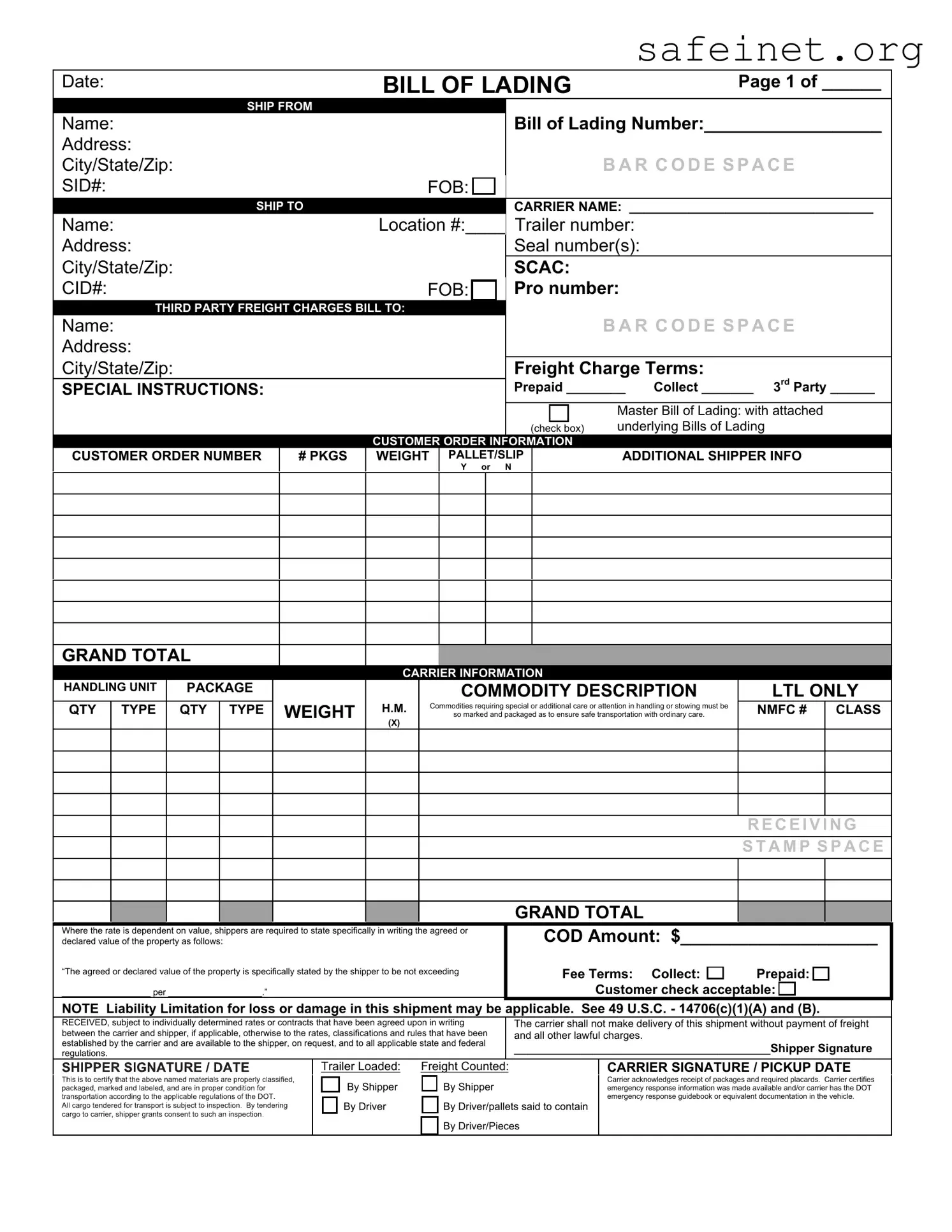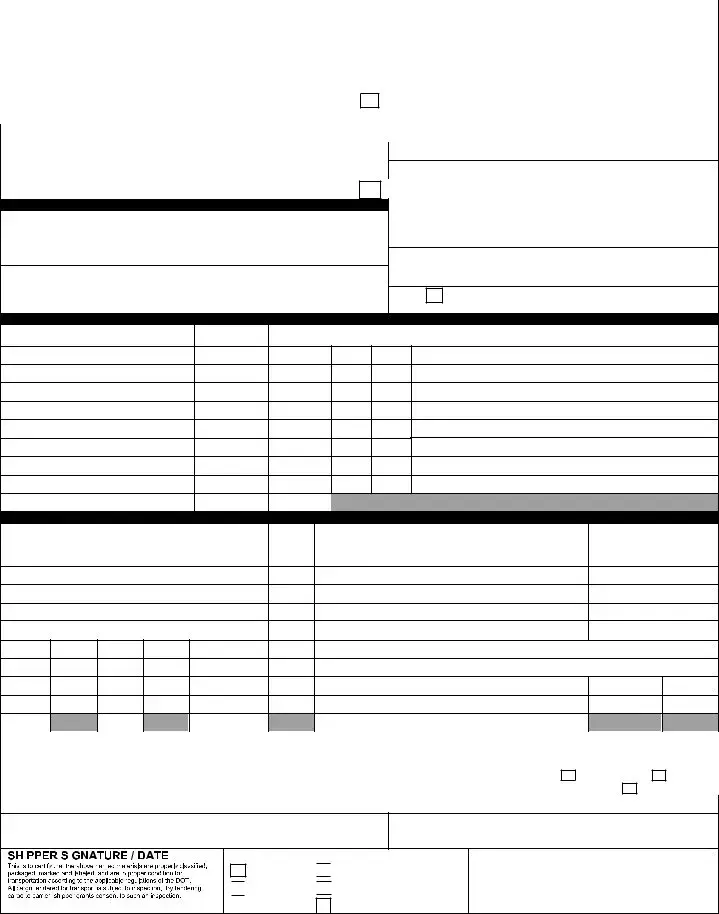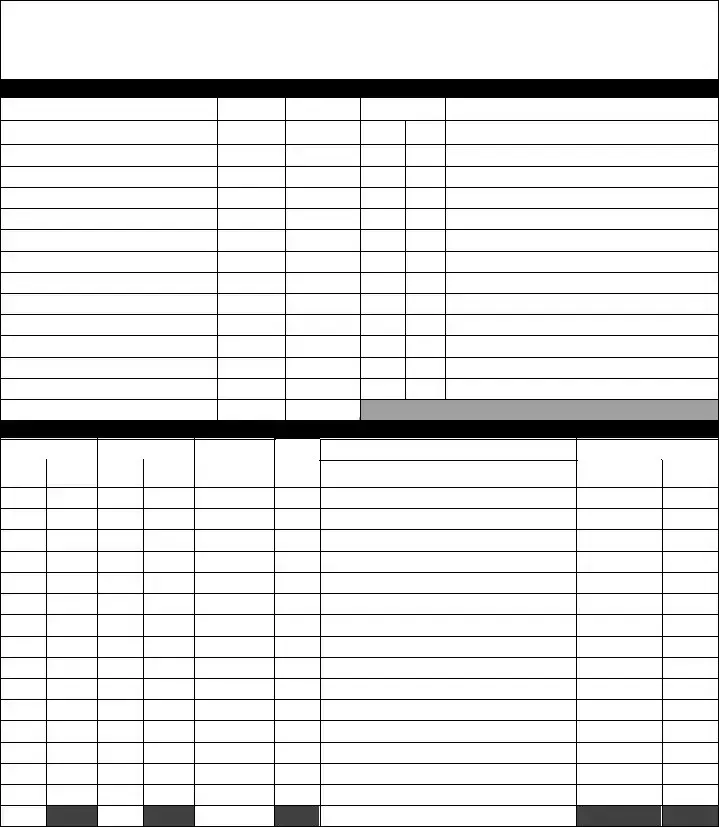The Bill of Lading is often compared to the Freight Bill, which is a document that details the charges for the transportation of goods. Both documents serve as vital records in the shipping industry. While the Bill of Lading acts as a receipt for the cargo and a contract between the shipper and carrier, the Freight Bill focuses specifically on the financial obligations. This dual purpose helps both the shipper and the carrier maintain clear records of the transaction and shipment details.
A Pro Forma Invoice is another document akin to the Bill of Lading. Typically, it outlines the expected costs and provides a preliminary bill before the actual invoice is issued. Similar to the Bill of Lading, the Pro Forma Invoice includes itemized details about the shipment. However, it does not serve as a transport document but rather as a quotation or estimate, allowing the buyer to understand potential expenses before the sale is finalized.
The Commercial Invoice also bears similarities to the Bill of Lading. This document is critical in international trade and serves as a request for payment from the seller to the buyer. Like the Bill of Lading, it includes comprehensive information about the goods, such as descriptions, quantities, and prices. However, it primarily functions to demand payment rather than act as a transport document. Both documents are commonly required by customs authorities during import and export processes.
The Packing List is another important document in the shipping process. It details the contents of each package and facilitates the packing and unpacking processes. Comparable to the Bill of Lading, it helps both parties ensure that everything that was supposed to be shipped is accounted for. However, the Packing List differs in that it does not serve as proof of contract or receipt; its primary function is to outline what is included in the shipment.
The Delivery Receipt parallels the Bill of Lading in that it confirms the receipt of goods. After delivery, the buyer signs the Delivery Receipt, acknowledging that the shipment arrived as stated. While both documents serve as proof of delivery, the Bill of Lading provides more detailed shipping information and serves as a legal document. In contrast, the Delivery Receipt is primarily a confirmation of receipt and does not act as an agreement or contract.
The Certificate of Origin also shares a connection with the Bill of Lading. It verifies where the goods were manufactured and may be required for customs clearance in some countries. While the Bill of Lading focuses on transport, the Certificate of Origin emphasizes the provenance of the shipment. Both documents facilitate smooth trade by ensuring that all necessary information about the shipment is available to customs authorities.
Finally, the Customs Declaration is relevant in the discussion of shipping documents related to the Bill of Lading. This document provides customs authorities with information about the contents and value of imported or exported goods. Like the Bill of Lading, the Customs Declaration is vital for compliance with regulations. They work together to ensure that shipments meet legal requirements for passage across borders.


 to certify that the above named materials are properly classified, packaged, marked and labeled, and are in
to certify that the above named materials are properly classified, packaged, marked and labeled, and are in proper condition for transportation according to the applicable regulations of the DOT.
proper condition for transportation according to the applicable regulations of the DOT.
 By Shipper
By Shipper
 By Driver
By Driver 
 By Driver/pallets said to contain
By Driver/pallets said to contain